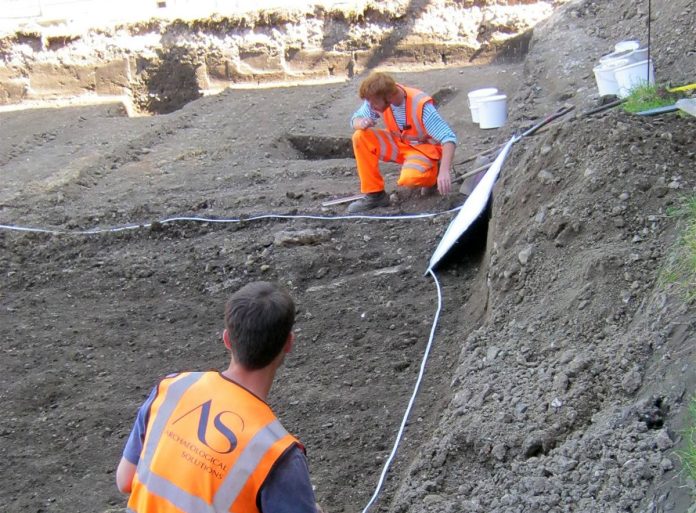Excavation and recording at the Shire Hall site of St Edmund, located partially within the bounds of the complex of the medieval Abbey took place after archaeological assessment and documentary research showed it to be in the area of the sacrist’s yard. The sacrist was an important official in the Abbey and played an important role in its life, being responsible for the fabric of the buildings of the Abbey and its estates.
Archaeological Solutions ’ involvement with the site began in 2011 when a trial trench evaluation of the site considered to be the location of the sacrist’s yard was commissioned. Significant archaeological remains were identified and an excavation, expanding on the area subject to trial trenching, was required for planning purposes. This was conducted in 2012 and the project is now nearing completion having progressed through the post-excavation phase.
Post excavation nears completion
The earliest activity at the site comprised sporadic Saxo-Norman features, dateable to the 12th century or earlier, including a large pit which may have been excavated in order to access the naturally occurring sands in this area for use in the construction of the buildings of the Abbey.
An increase in activity was observed from the 12th century onwards which matches historical research which indicates that the sacrist’s yard was removed from its original location to a new one in 1182, when Samson of Tottington was appointed Abbot.
The activity dated to this period comprised a rectangular post-built structure, some further posthole configurations and several refuse pits. While not representing any of the important buildings that would have lain within the sacrist’s yard, this evidence may be considered to represent the kinds of structures expected in such an area.
A gap in the chronology of the pottery recorded at the site from around 1400 to approximately 1580 suggests that activity, or at least those activities that resulted in the deposition of pottery, ceased during this period. This may indicate that the sacrist’s yard was moved to yet another location at this time and that the site was used solely for agricultural purposes, or left vacant, until some 40 years after the Abbey was dissolved.
Archaeological features of later date suggest that the site had a semi-agricultural function in the post-medieval period. Historical information indicates that it was appended to a series of meadows on the western bank of the river Linnet and may have functioned as an agricultural yard. However, the presence of a well at this time suggests that it may have supplied water to several buildings which lay adjacent to the west during this period. In the early modern period it appears that the site may have been used as gardens.
Early maps from this period indicate that it was undeveloped though a boundary ran through the site and this was identified during the excavation.
- Educational Resource pack by MagnaCarta800 http://magnacarta800.org.uk/Abbey_of_St_Edmunds_pack_part1.pdf
- Houses of Benedictine monks: Abbey of Bury St Edmunds


